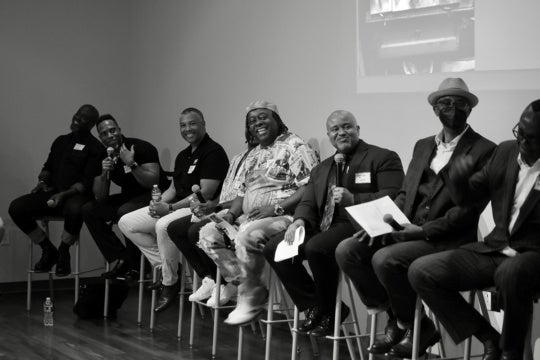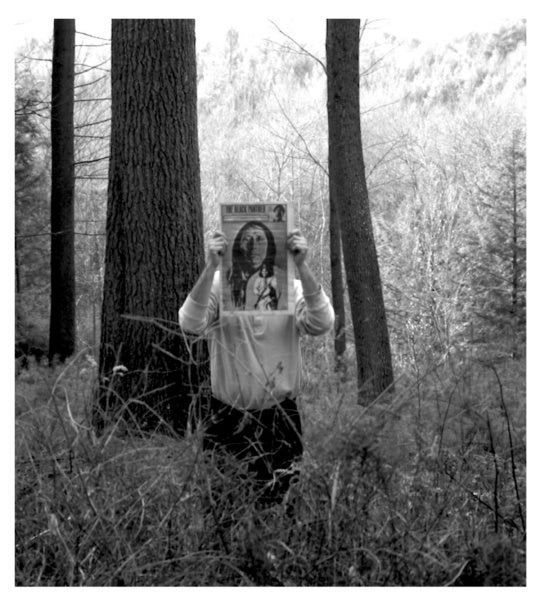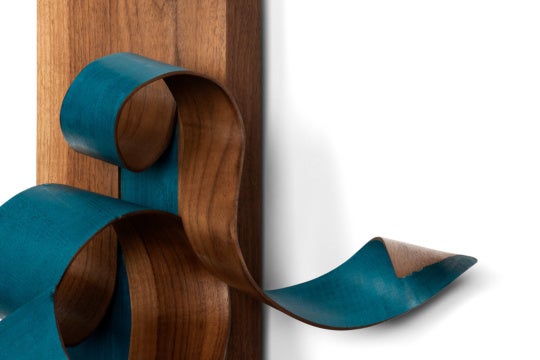
Richard Mosse debuted his six-channel video installation The Enclave in the Irish Pavilion at the 2013 Venice Biennale. Now on view at the Nasher Museum at Duke University in Durham, North Carolina, The Enclave leads the viewer through a maze of lush imagery. Six floating projection screens radiate warm magentas into an otherwise dark room. The projections alternate screens, drawing the viewer through the room. Occasionally, all six channels light up the room at once. The beauty is deceptive.
The Enclave’s subject is the turbulent violence in the Democratic Republic of Congo (DRC), though without a linear narrative. The Irish artist and his collaborators, cinematographer Trevor Tweeten and composer Ben Frost, documented their 2012 travels in the Congo, using Kodak Aerochrome film, an infrared film used by military forces to detect camouflaged targets. The technology causes the lush green foliage to appear a brilliant, whimsical pink. Elsewhere, luminous golds and reds fill the landscape, as if the land has been transformed into a sunset, all of which is a stark contrast to the harrowing imagery. The Enclave depicts the remains of a town after a night of massacre , a mother giving birth in rudimentary circumstances, and armed soldiers desperate to defend themselves with their ad hoc weaponry. To get the camera’s attention a young girl excitedly dances in the street—unfazed by the corpses at her feet.

The incongruous mix of beauty and horror is troubling. To take pleasure in the sensual film is to take pleasure in another’s suffering. The otherworldly coloration serves to further isolate the subjects from the viewer’s reality.
In the last quarter of a century, Ugandan refugees have fled into the Congo to escape genocide. The DRC has been invaded by neighboring countries and the government has been overturned multiple times. Rebel groups continue to raid villages throughout the devastated Congo, resulting in the deadliest war since World War II with more than 5 million casualties. Meanwhile, the DRC’s natural resources, such as diamonds and gold, have been extracted by outsiders taking advantage of the country’s instability. Exploitation is a story all to familiar to the Congolese.

In The Enclave, Mosse also capitalizes on the Congo’s instability, only this time the extracted resources are vibrant landscapes and despairing people. In an interview included in the exhibition’s brochure, the artist describes his selection of the Congolese for his project: “I felt that this film has to be taken to a surprising place, to work the medium against the grain. Congo’s wars emerged in my mind. I knew very little about them, but after a little research, I found that they were perversely appropriate for Aerochrome.” The artist, with credentials from Yale and Goldsmiths, benefits from these scenes of war. Mosse creates a conceptually solid video with visuals that anchor an unmovable image in the mind of the viewer — with seeming insensitivity to the already exploited people.
But before accusing the artist of exploitation, we have to consider our role. The tantalizing imagery seduces viewers. The strange combination of vivid scenery and shocking content takes time to discern. Before we know it, we have already taken pleasure out of another’s suffering. The Enclave is a well conceived trap that draws out our own faults. Richard Mosse provides the spectacle and we predictably concede.
Kellie Bornhoft is an artist and writer living in Raleigh, North Carolina. She is a current participant in BURNAWAY’s Emerging Art Writers Mentorship Program.




